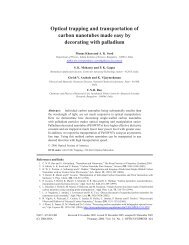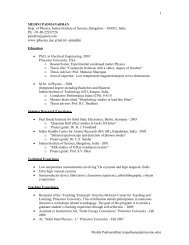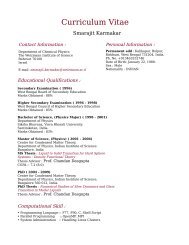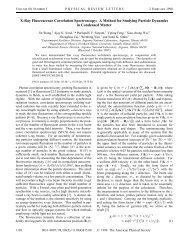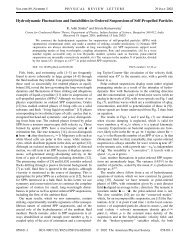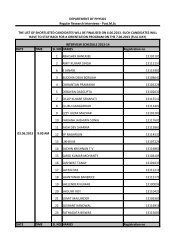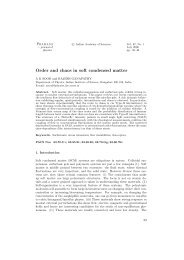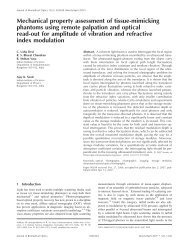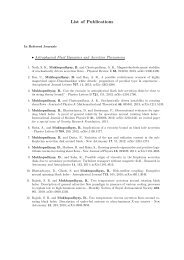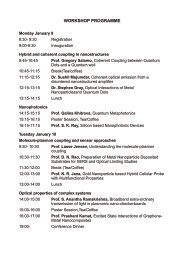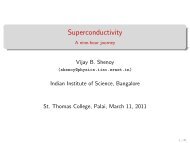Thermoelectric Properties of Fe0.2Co3.8Sb12-xTex ... - Physics
Thermoelectric Properties of Fe0.2Co3.8Sb12-xTex ... - Physics
Thermoelectric Properties of Fe0.2Co3.8Sb12-xTex ... - Physics
Create successful ePaper yourself
Turn your PDF publications into a flip-book with our unique Google optimized e-Paper software.
Thermal Conduction, Feedback and Multiphase Gas in Galaxy<br />
Clusters<br />
Baban Wagh, Prateek Sharma<br />
Galaxy clusters are the largest gravitationally bound, relaxed astronomical objects in the universe, with total<br />
mass around 10 14 − 10 15 M ⊙ , where M ⊙ is a solar mass. Most <strong>of</strong> the cluster mass, about 85%, is in the dark<br />
matter halo, while 15% is the baryonic mass. Of this 15%, around 90% is in the form <strong>of</strong> hot, X-ray emitting<br />
plasma (∼ 10 7 − 10 8 K), called the intracluster medium (ICM). Due large gas density in the central regions,<br />
the ICM loses energy primarily by bremsstrahlung radiation, and cools. But there is a discrepancy between<br />
the predicted and the observed cooling rate in galaxy clusters, and this is called the cooling flow problem. It is<br />
believed that the heat lost to cooling is replenished by feedback heating from the central supermassive black hole<br />
and via thermal conduction bringing in heat from larger radii. Sharma and others ([1]) have identified ratio <strong>of</strong><br />
the thermal instability timescale and the free-fall time (t TI /t ff ) as an important factor in multiphase formation.<br />
If t TI /t ff 10, then cold gas condenses from the hot phase from the ICM in thermal balance. Condensation<br />
<strong>of</strong> cold gas is suppressed by thermal conduction, and thermal conduction in dilute ICM plasmas is along the<br />
local magnetic field direction. We study the role <strong>of</strong> thermal conduction in multiphase gas formation in galaxy<br />
clusters using idealized MHD simulations maintained in global thermal equilibrium. We find that while isotropic<br />
conductivity can effectively suppress cold gas formation, anisotropic thermal conduction does not change the<br />
t TI /t ff criterion based on hydro simulations. We also quantify the relative role <strong>of</strong> feedback heating and heating<br />
due to thermal conduction in cluster cores.<br />
References<br />
[1] Sharma, P., McCourt, M., Quataert, E., & Parrish, I. J. 2012, MNRAS, 420, 3174<br />
1



